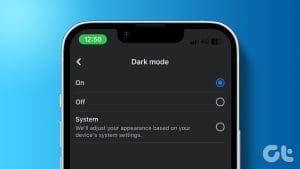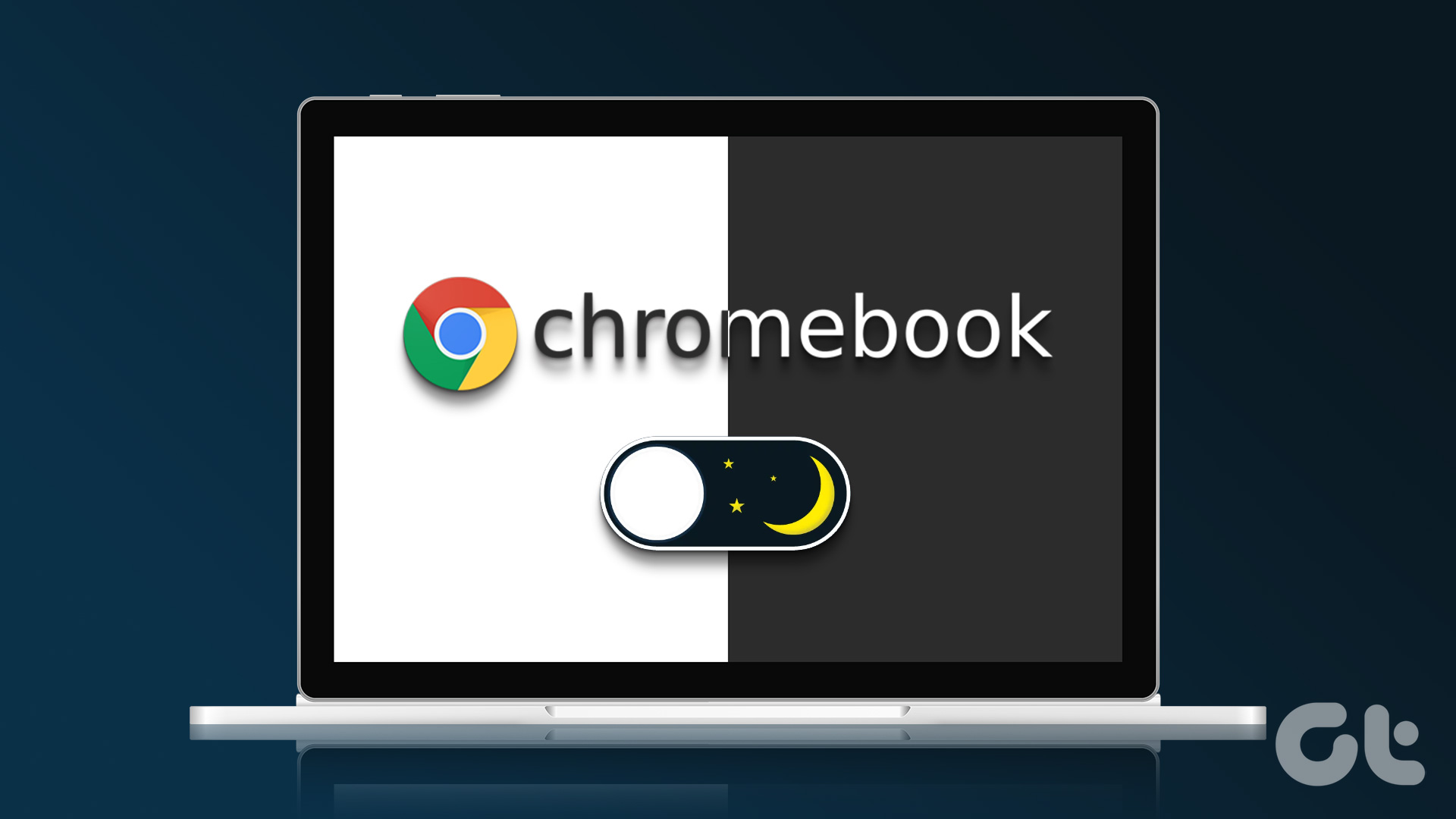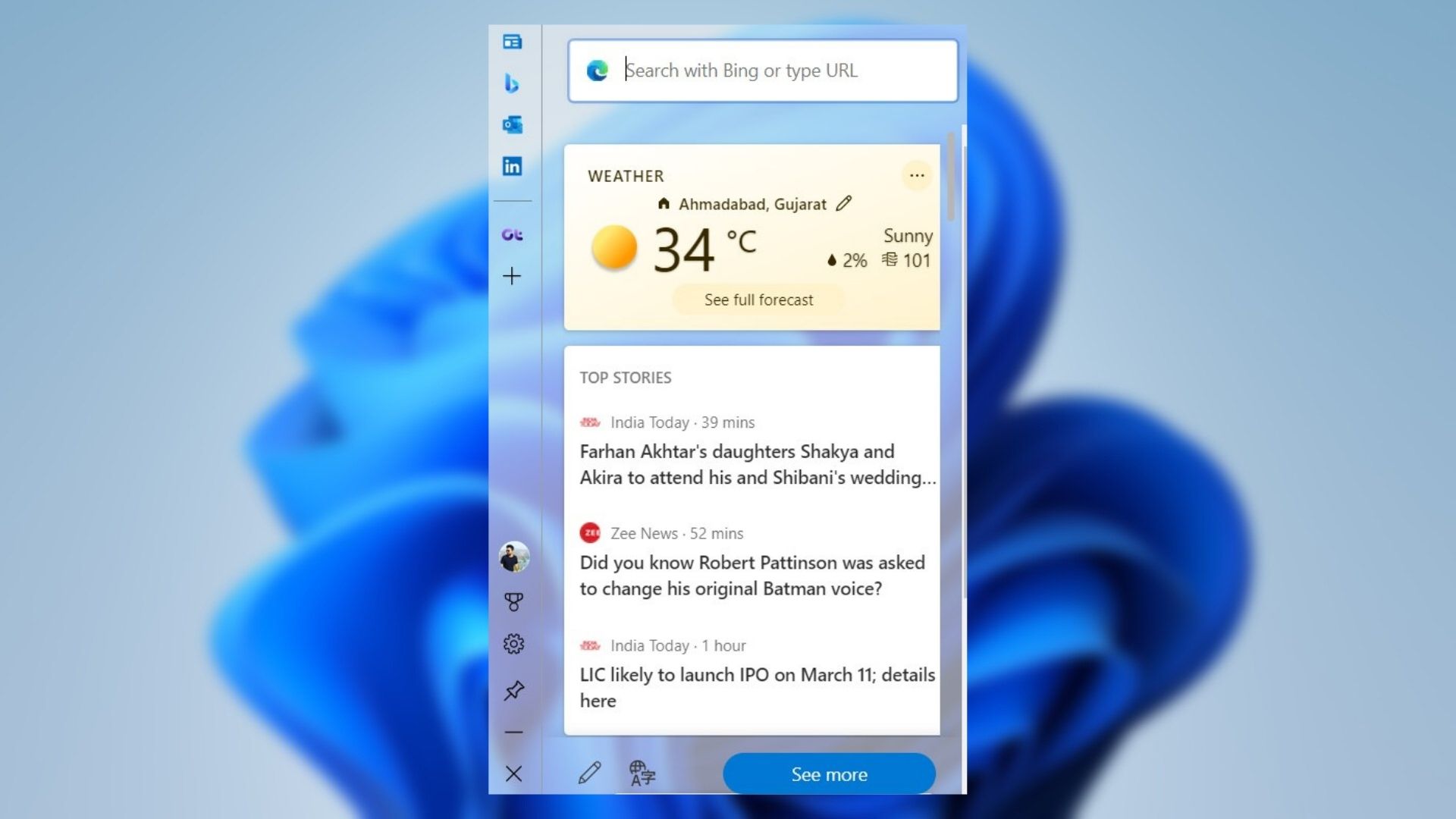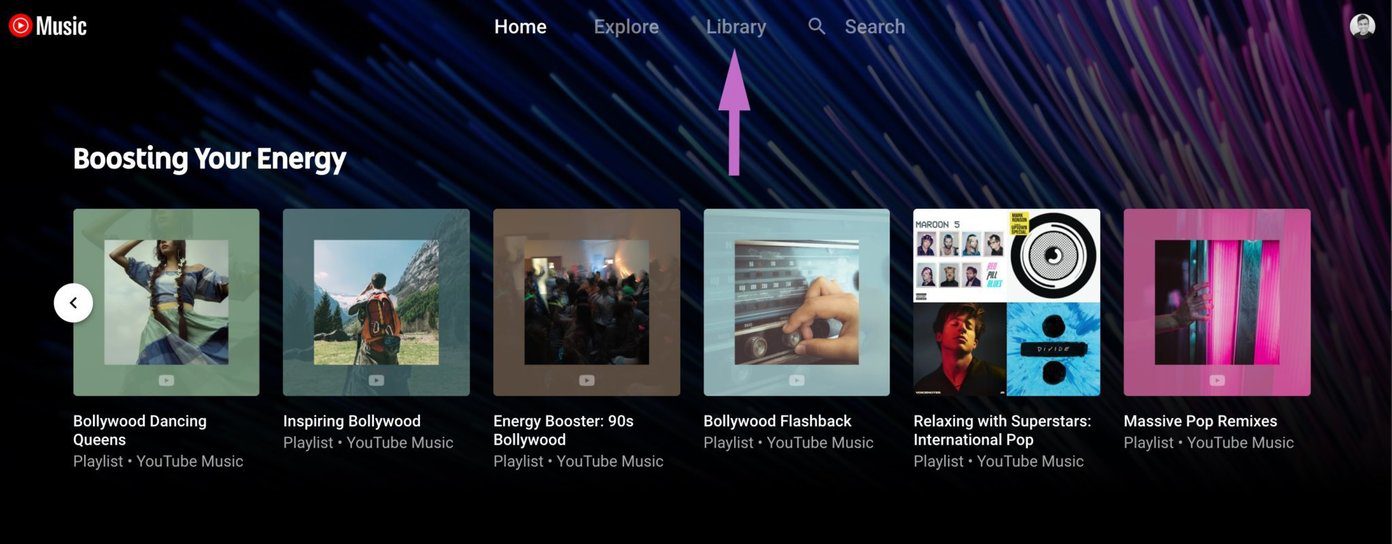Microsoft Edge’s shift toward the Chromium rendering engine has made it a better browser in almost every aspect. It displays websites without issues, supports a vast library of extensions, and feels snappy and responsive. To make matters even better, it also sports dark mode functionality. In this article, we will guide you on how to enable dark mode in Microsoft Edge on desktop and mobile.
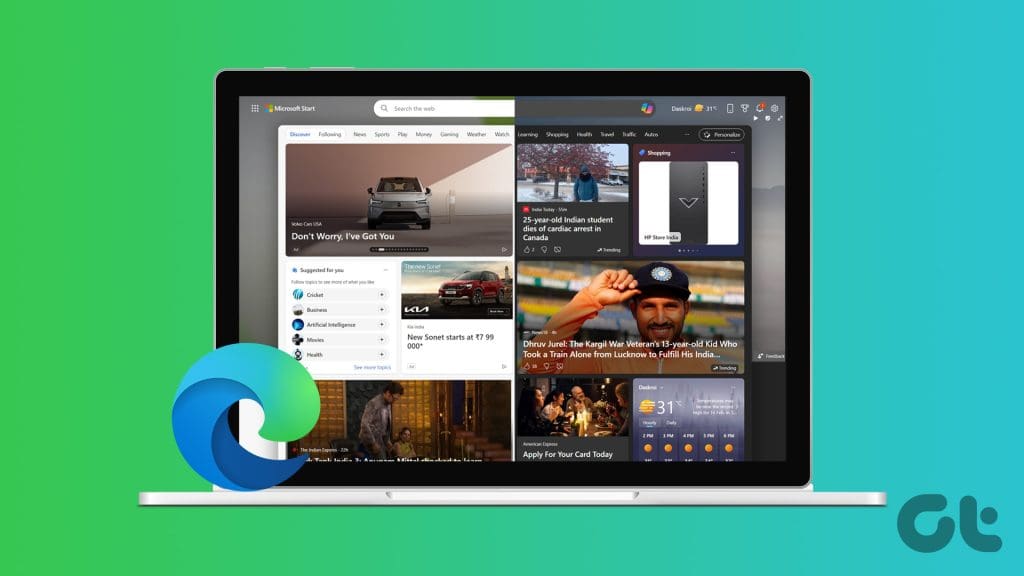
Microsoft Edge’s dark mode extends beyond the dark theme present in the non-Chromium version of the browser. As long as websites feature built-in support for a darker color scheme, it will render them in dark mode as well. With this understanding, let’s begin with the article.
How to Enable Dark Mode in Microsoft Edge on Desktop
There are multiple ways to enable dark mode in Microsoft Edge. We will explain all the different methods in a step-by-step format. Let’s begin with the most common and easiest method.
1. Turn on Dark Mode in Microsoft Edge
Whether you use Windows or macOS, Microsoft Edge’s dark mode functionality works the same on both platforms. Just like with Google Chrome, you can make the browser match the color scheme of the operating system — Edge will then show up in dark mode whenever the system color mode in Windows or macOS is set to Dark. But that isn’t all. There’s also a dedicated option to turn on dark mode for the browser itself at all times.
Step 1: Start by opening the Edge menu (click the three dots in the upper-right corner of the browser window). Afterward, click Settings.
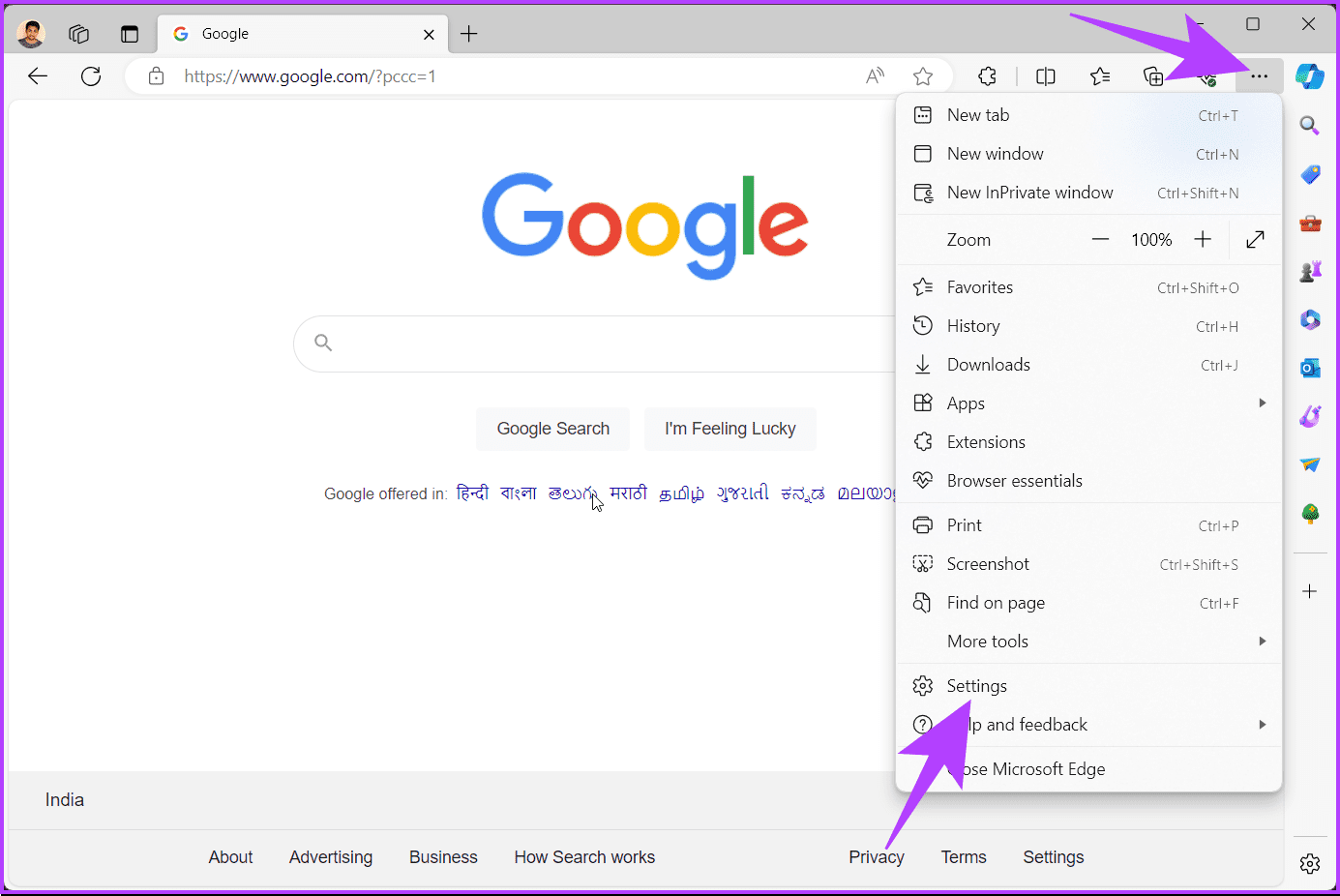
Step 2: Click Appearance on the left-side navigation pane.
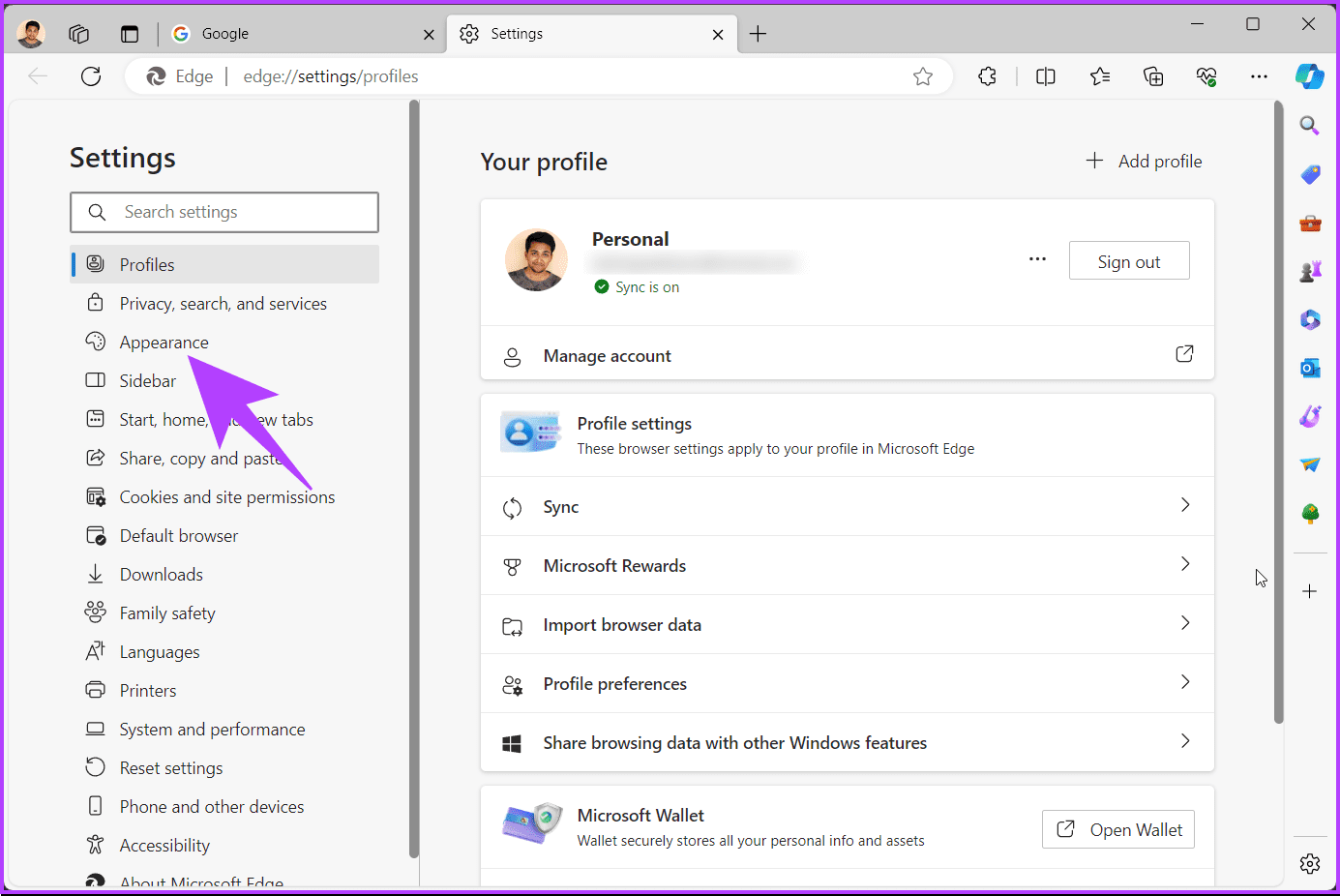
Step 3: Click the pull-down menu next to Theme. Select Dark to switch the browser to dark mode immediately. If you want Microsoft Edge to match the color scheme in Windows and macOS, select System Default instead.

Once enabled, Microsoft Edge’s entire theme will render in dark mode, with varying shades of dark colors used to define browser elements. Any sites that feature native support for a darker color scheme will automatically detect the browser’s color preference and load in dark mode.
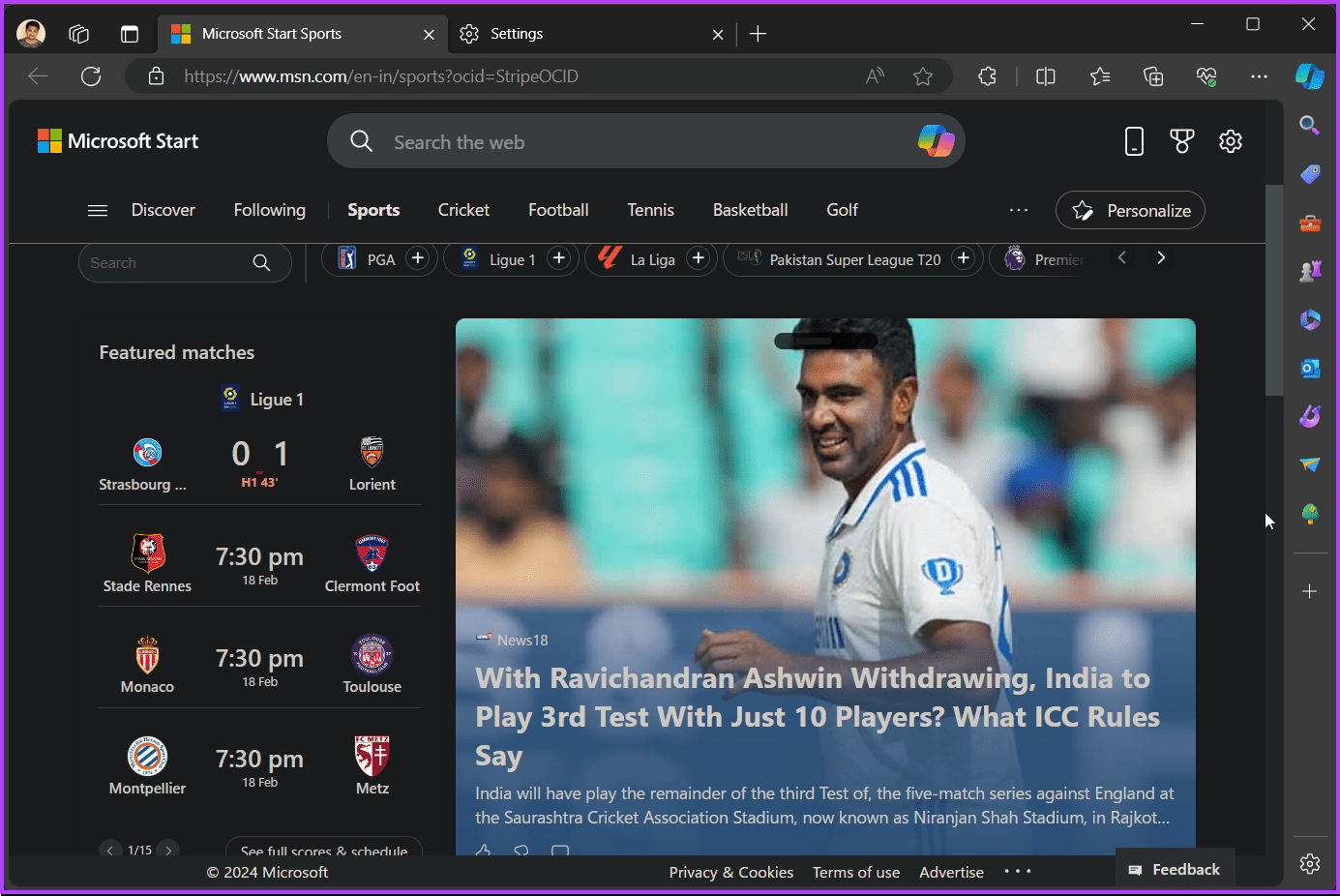
However, you may come across websites that aren’t capable of supporting dark mode yet. Fortunately, Edge comes with an experimental feature that can force dark mode on these sites, continue reading.
2. System Color Controls in Windows 10 and macOS
If you opted for the System Default option in Microsoft Edge, the browser would switch to dark mode automatically whenever the Dark system color scheme is selected in Windows and macOS. That is perfect if you prefer a consistent experience across the operating system and supported applications.
On Windows 11/10
Step 1: Right-click the desktop, select ‘show more options,’ and then select Personalize.
Note: On Windows 10, right-click the desktop > Personalize.

Step 2: On the Settings app that shows up, click Colors.
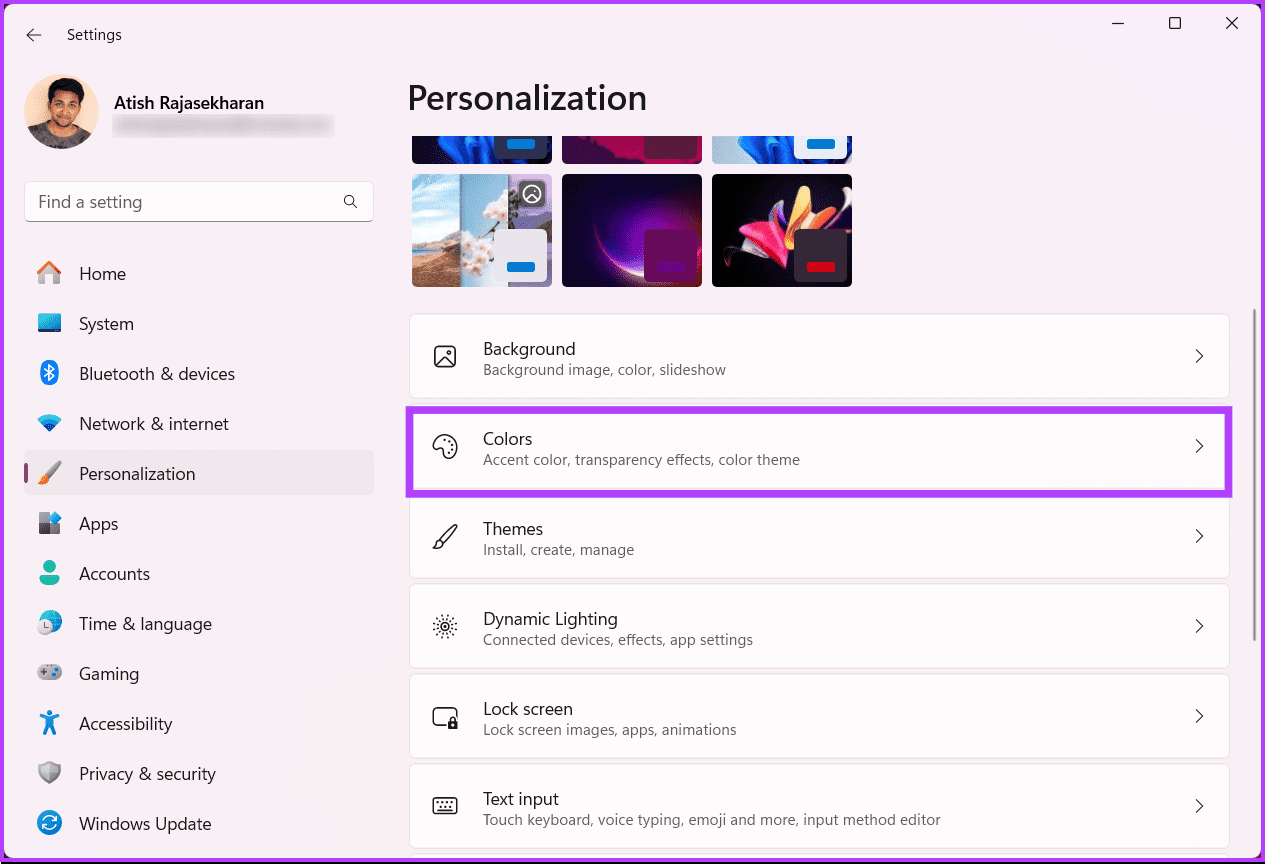
Step 3: Under Colors, next to ‘Choose your mode,’ choose between Light and Dark color modes for the operating system and supported apps.
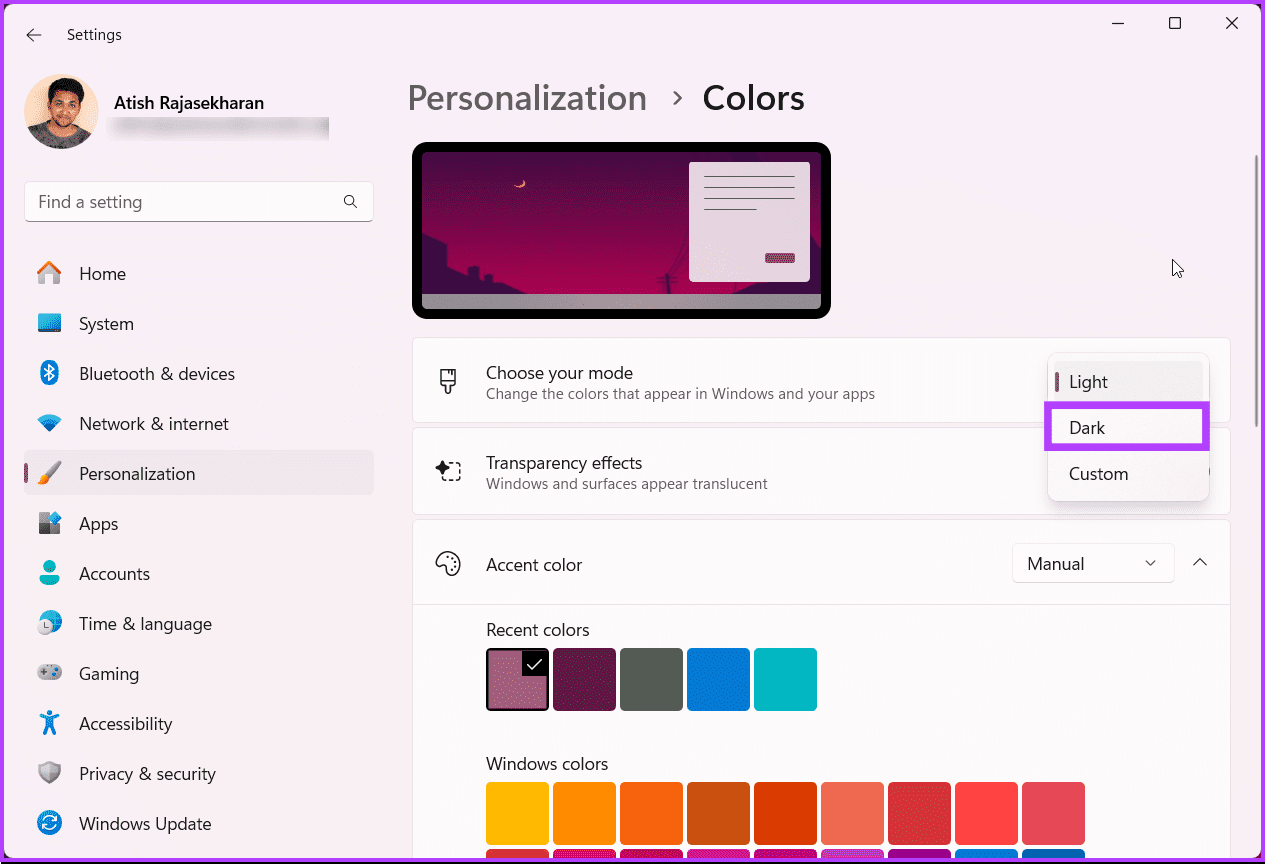
Furthermore, you can select the Custom option to manage taskbar colors or accent colors for the operating system and supported apps separately. Continue reading if you are a Mac user.
On macOS
Step 1: Press the ‘Command + Space’ key on your keyboard to open Spotlight Search. Then, type System Preferences and press the Return key.
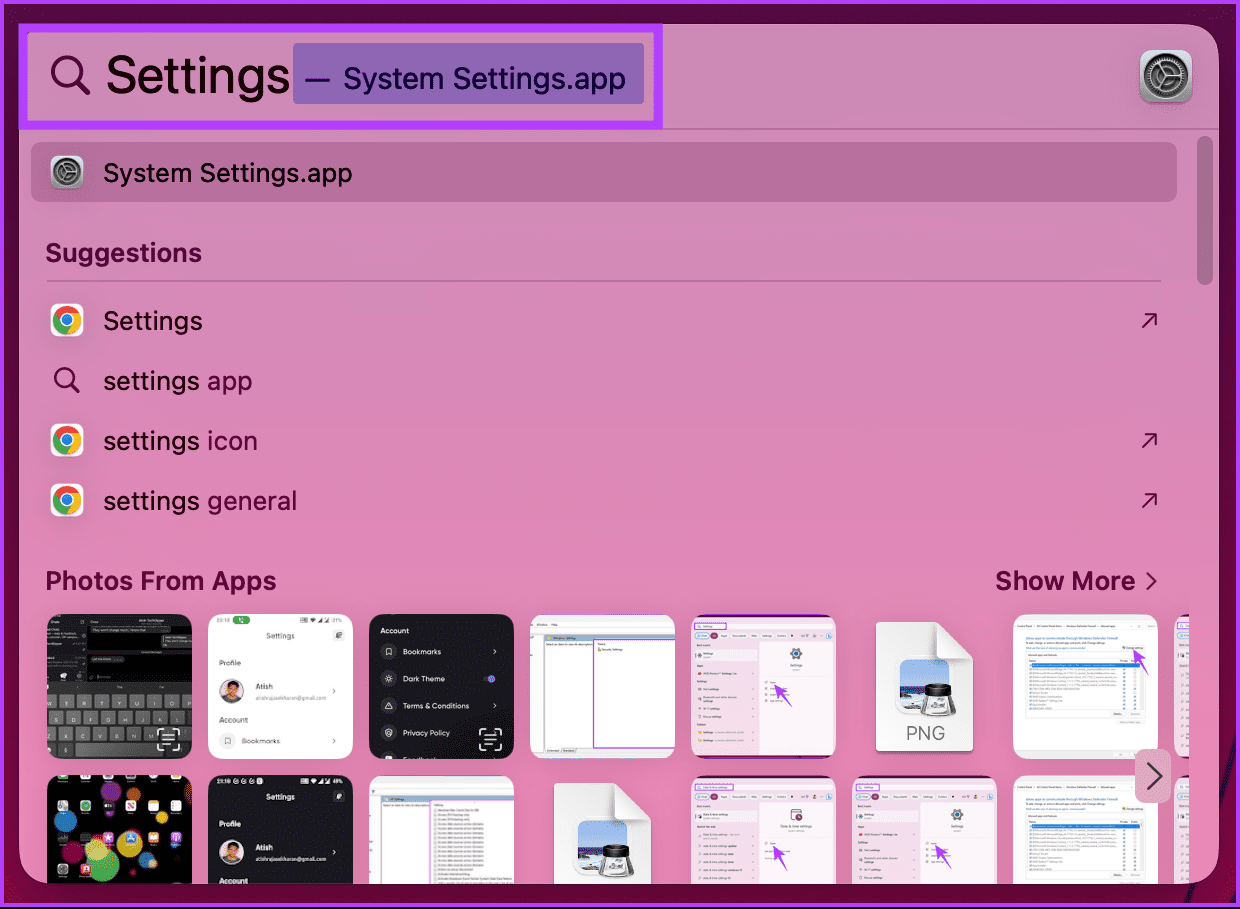
Step 2: Now, go to Appearance and choose Dark to switch color schemes.
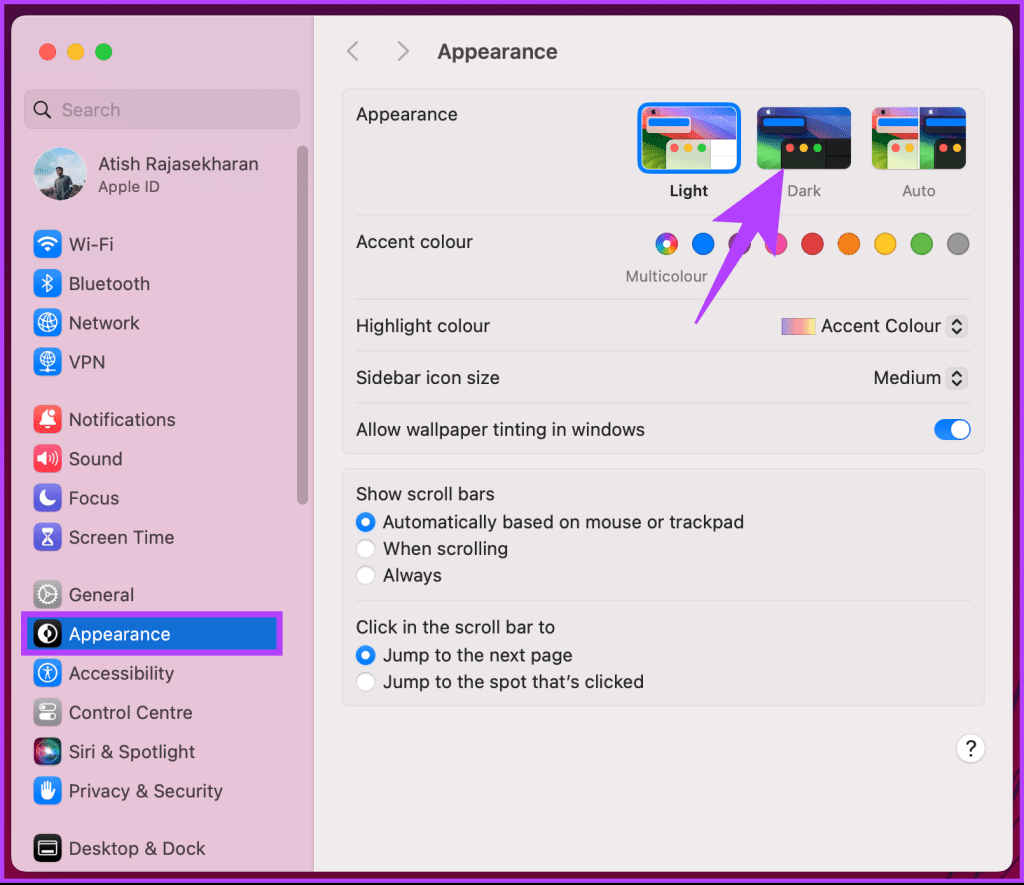
With this, the entire operating system and supported apps, including Microsoft Edge, will turn dark. If you are running on an older version of Microsoft Edge, where the option to enable dark mode without extension is not available, check out the next method.
3. Force Dark Mode in Microsoft Edge
Microsoft Edge has an experimental feature that lets you forcibly display all sites in dark mode. It works well, but you will come across some weird inversion issues once in a while. If you don’t mind that, then here’s how to enable the feature.
Note: The following experimental feature is also present in other Chromium-based browsers
Step 1: Launch Microsoft Edge on your Windows or Mac computer.
Step 2: Type the below address into the address bar of a new tab in Microsoft Edge, and then press Enter.
edge://flags/#enable-force-dark
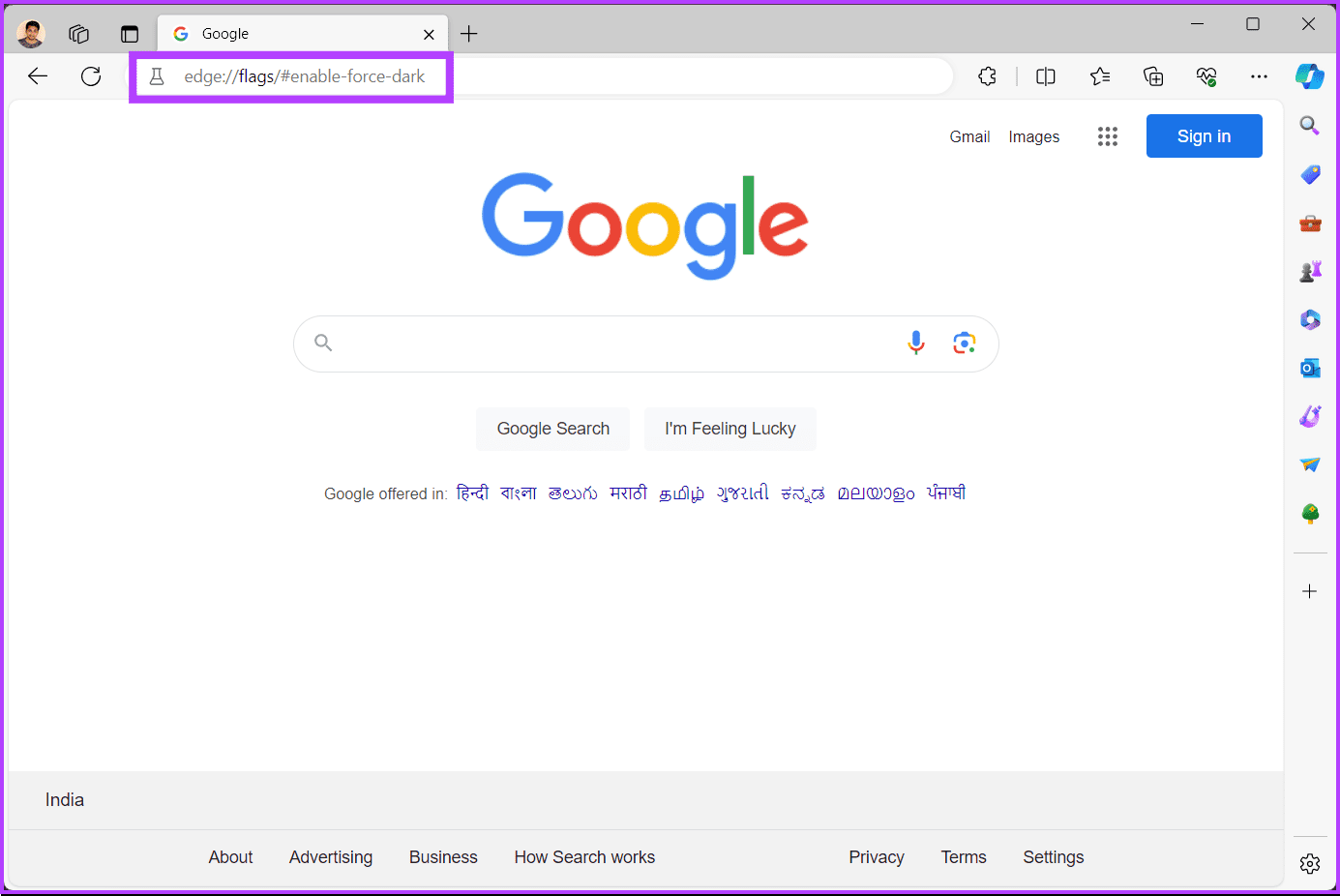
Step 3: Click the pull-down menu next to ‘Auto Dark Mode for Web Contents,’ and then select Enabled.

Step 3: Click Restart to relaunch the browser.
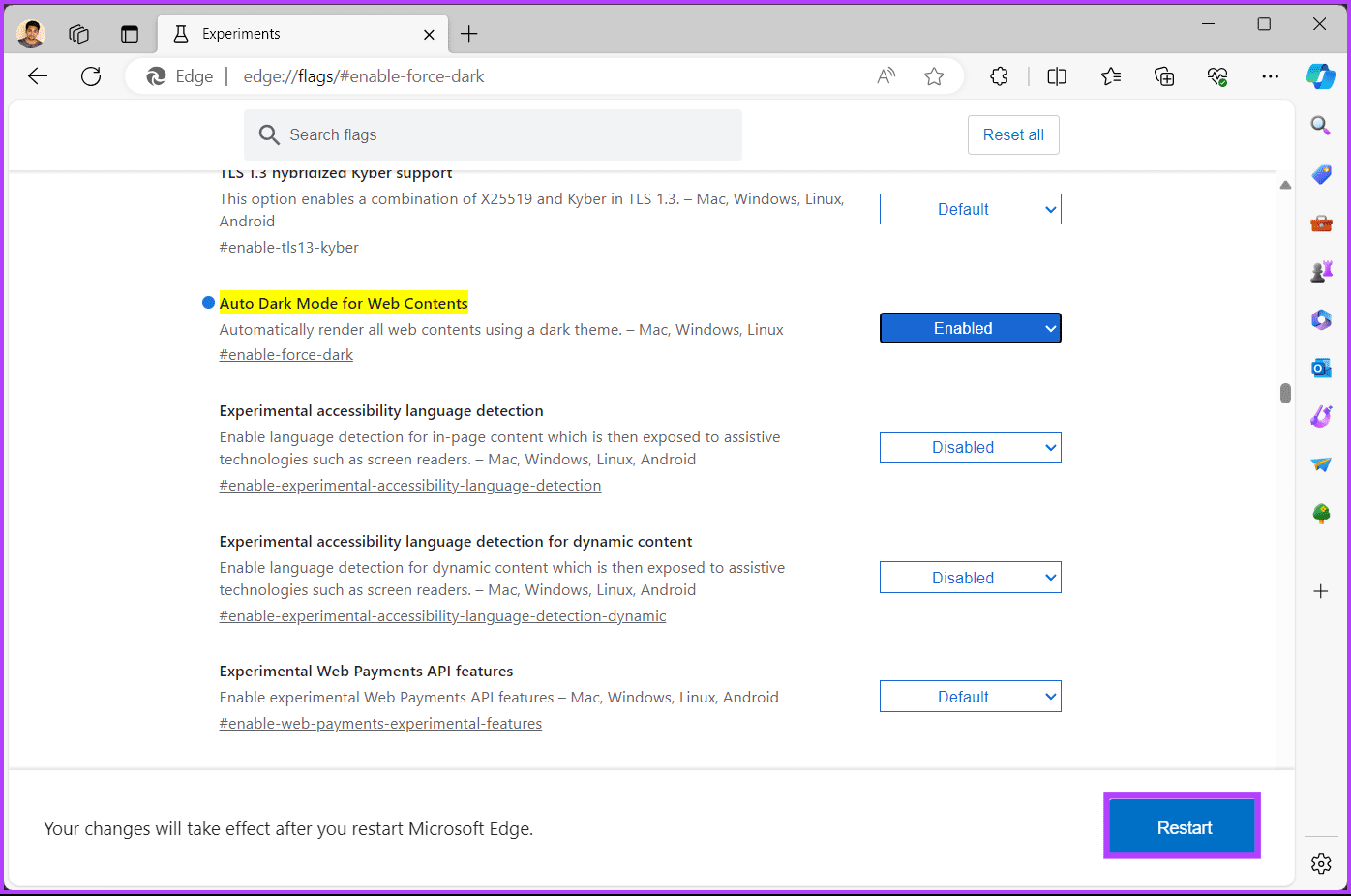
That’s it. Microsoft Edge should forcibly render all sites in dark mode from now on. The experimental feature works outside the color controls present within the browser’s Settings panel — which means that you can view sites in dark mode even while using the normal browser theme.
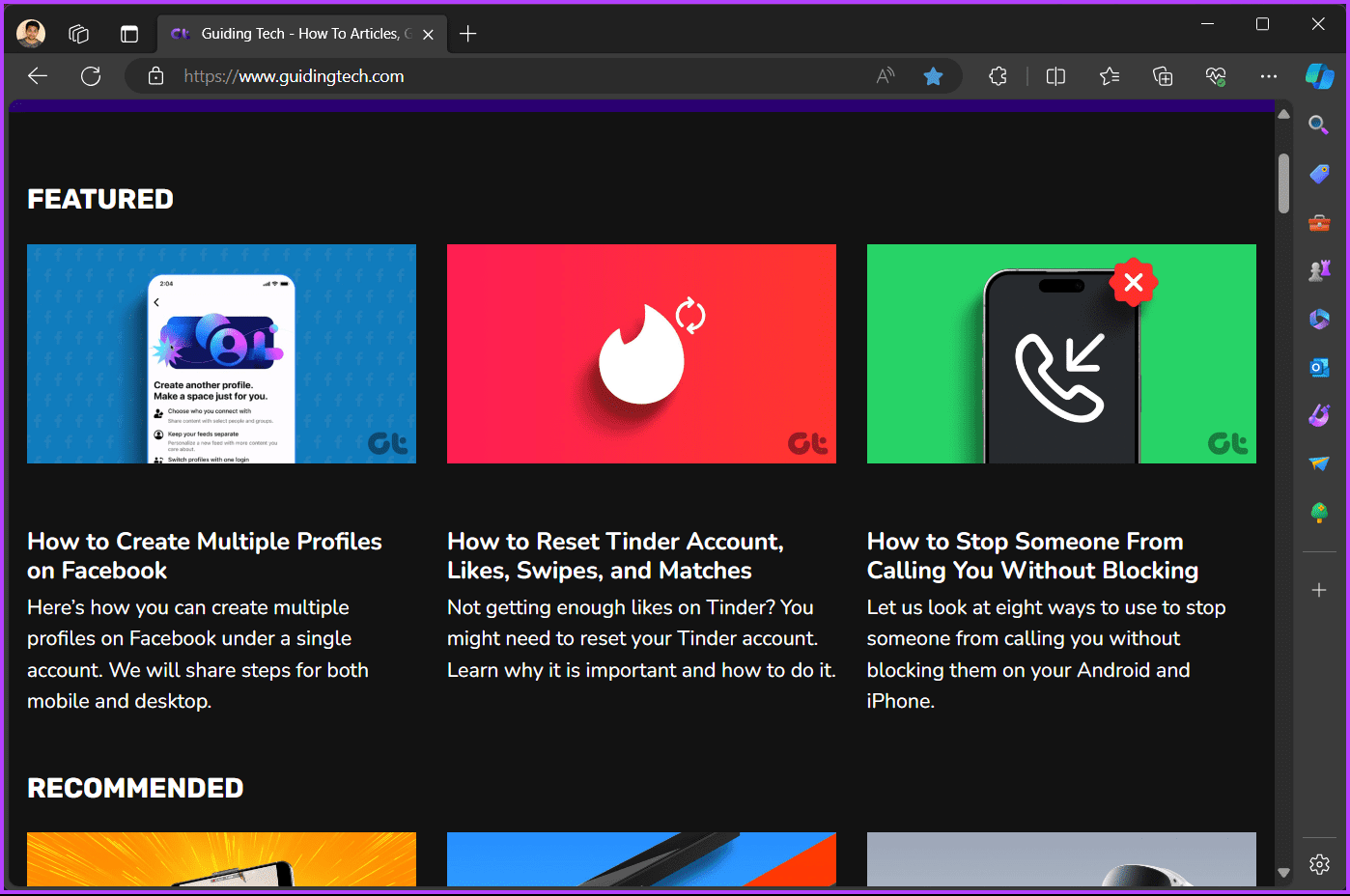
If you want to disable the feature, go through the steps above again. However, you need to select Default while using the menu next to Force Dark Mode for Web Contents. If you don’t want to go through the settings to enable this nifty little feature, continue reading.
Also Read: How to install Chrome extensions in Microsoft Edge
4. Enable Dark Mode Using Third-Party Tools
While Microsoft Edge already has a built-in dark mode, using third-party tools such as Dark Reader, Luna Reader, and Dark Mode can offer additional customization and features that give you more control over the experience. However, it’s important to be cautious when installing extensions, as some may contain malware or pose privacy risks. We have recommended our list of dark mode extensions for Chromium browsers.
With Microsoft Edge on the desktop now in dark mode, you may also want to turn on dark mode in the Edge mobile app.
How to Turn on Dark Mode in Microsoft Edge Mobile App
The steps are the same for both Android and iOS. For demonstration, we are going with Android. However, if you are on iOS, you can follow along.
Note: Ensure you have the updated Microsoft Edge app on your device.
Step 1: Launch the Microsoft Edge app on your Android or iOS device. Once launched, tap on the hamburger icon in the bottom-right corner.
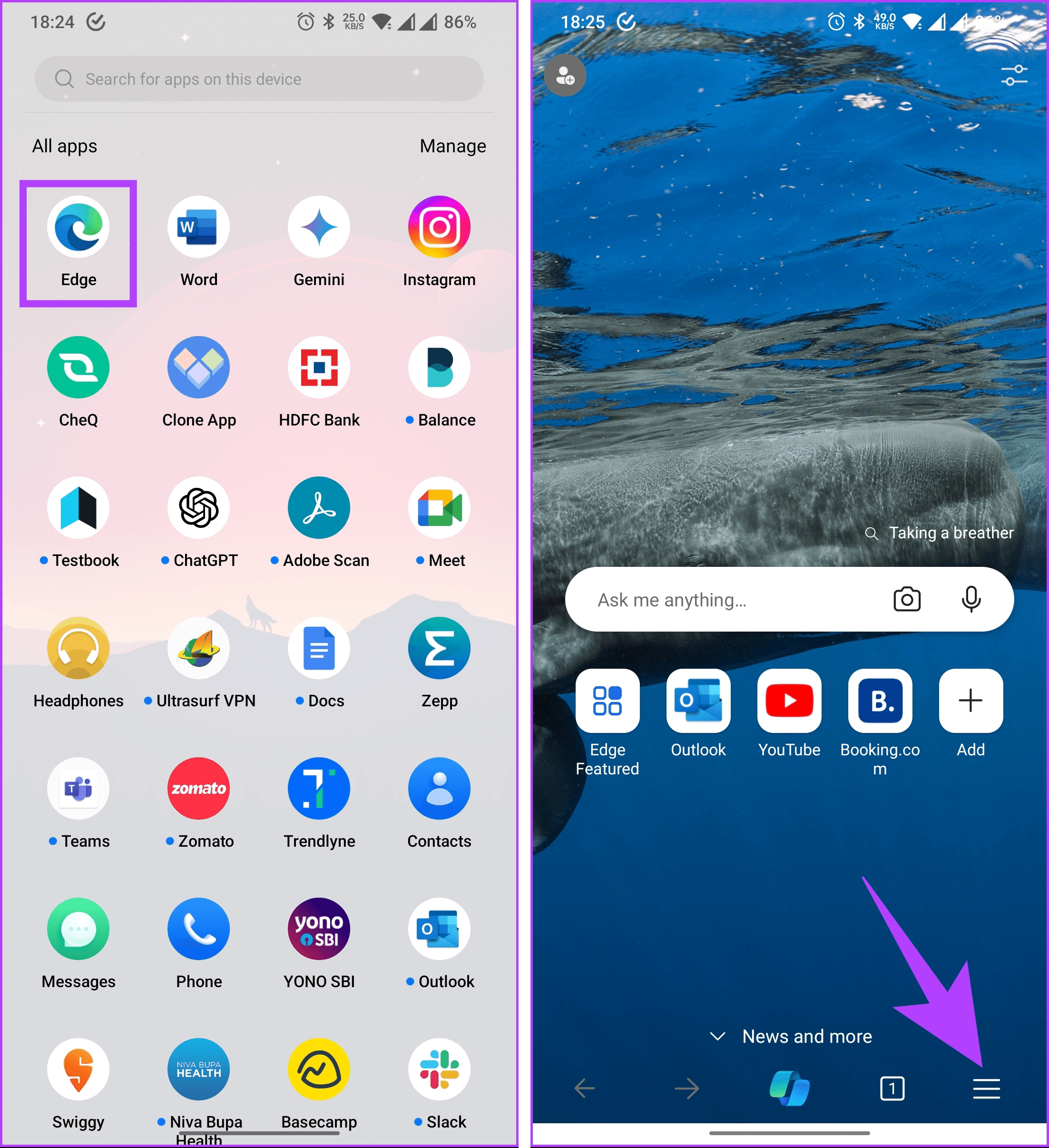
Step 2: From the bottom sheet, tap on Settings. On the next screen, tap on Appearance.
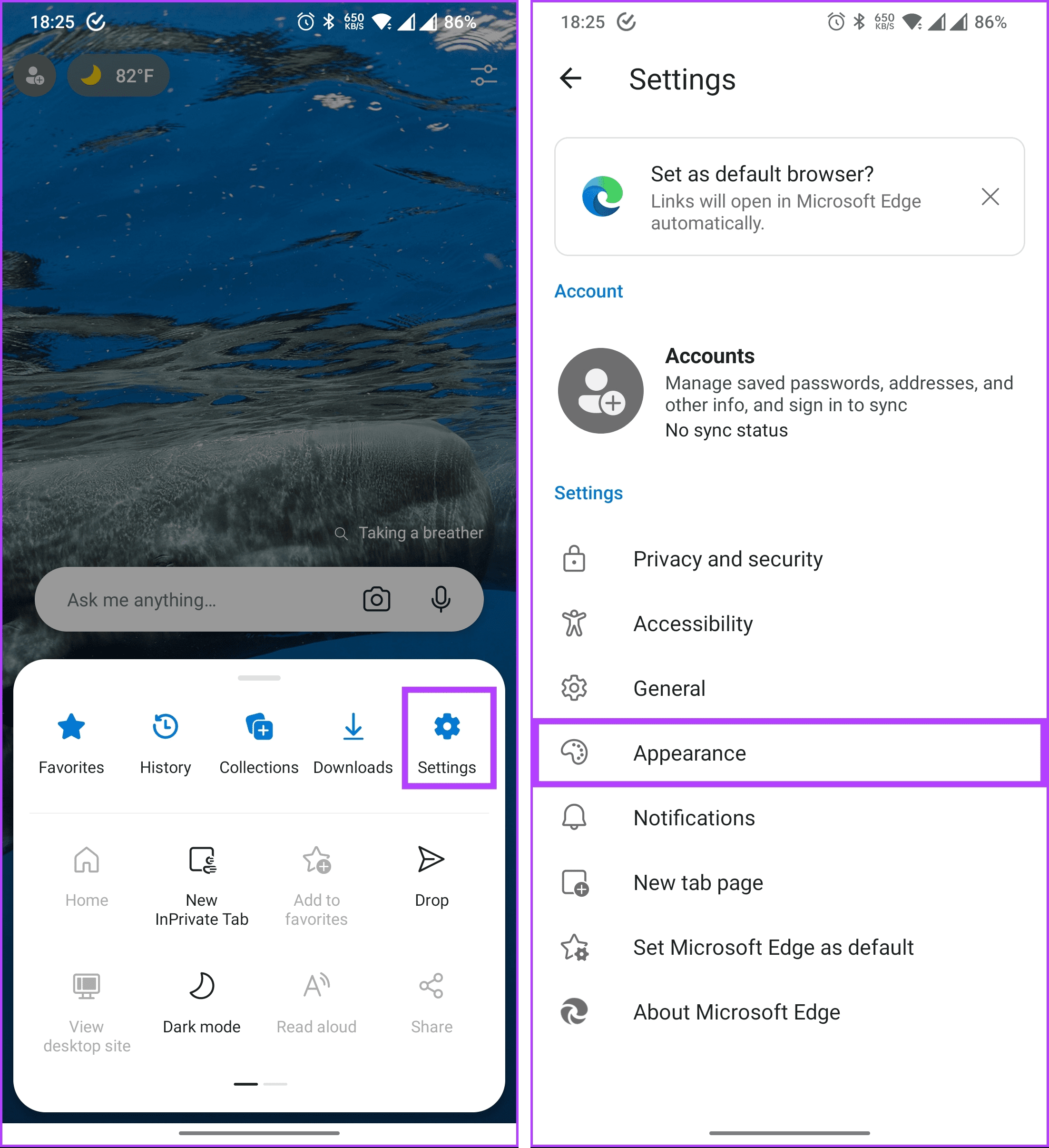
Step 3: Under Appearance, change the app theme to Dark by tapping on it. Additionally, you can also toggle on ‘Dark theme for all web pages’ to apply dark mode to all web pages.
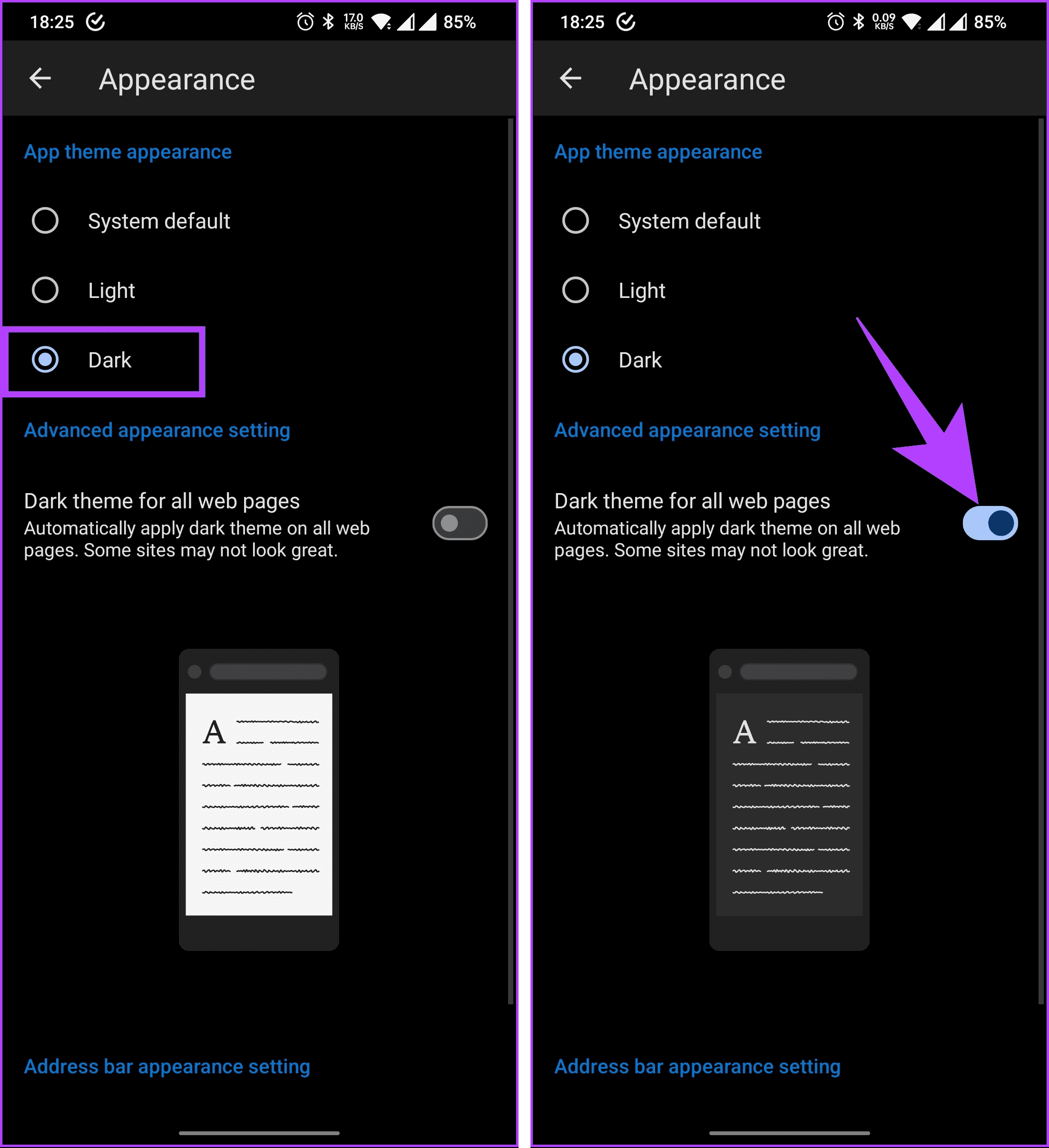
There you go. You have successfully enabled dark mode in Microsoft Edge with no extensions or hacks. It is important to note that some sites may not work properly or may sometimes break when you force dark mode on them.
If you have any queries we missed addressing, check out the FAQ section below.
FAQs on Enabling Dark Mode in Microsoft Edge
No, Microsoft Edge does not have a built-in keyboard shortcut specifically for toggling Dark Mode. You typically need to go to the settings to switch between light and dark themes.
Dark mode on OLED displays may save some energy compared to light mode because OLED screens emit light on a per-pixel basis. Dark pixels use less power. However, the actual energy savings may vary depending on the device and usage patterns.
Microsoft Edge provides a default Dark Mode, but the degree of customization might be limited. You can explore third-party themes or extensions for more advanced customization options.
Browse in Dark Mode
Now that you know how to enable dark mode in Microsoft Edge, you can surf the internet without having your eyes blinded, especially late at night. In case, you are facing any issues with dark mode, you may also want to read the best fixes for dark mode not working in Microsoft Edge on Windows 11.
Was this helpful?
Last updated on 18 February, 2024
The article above may contain affiliate links which help support Guiding Tech. The content remains unbiased and authentic and will never affect our editorial integrity.



